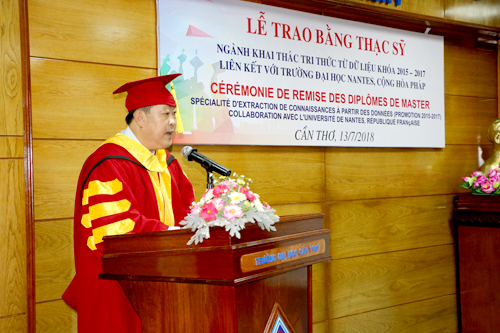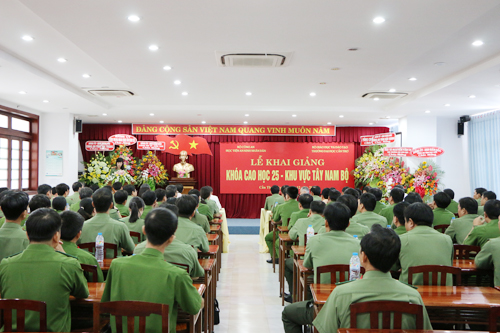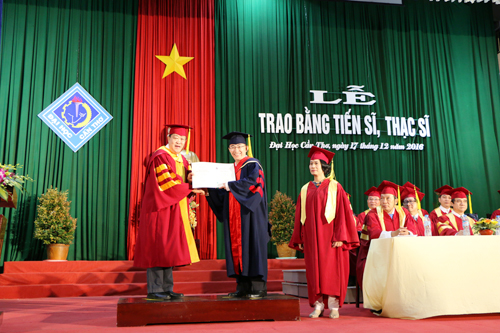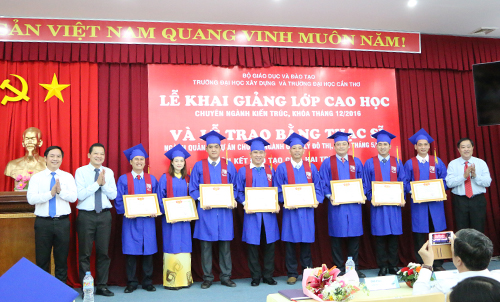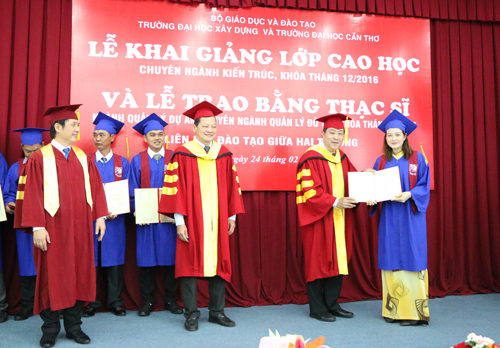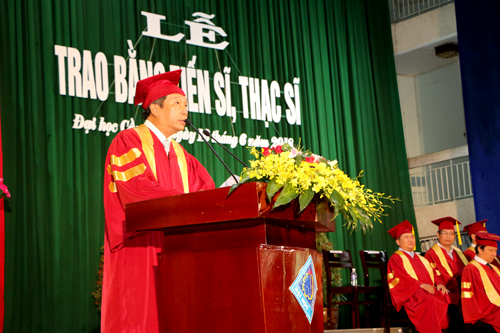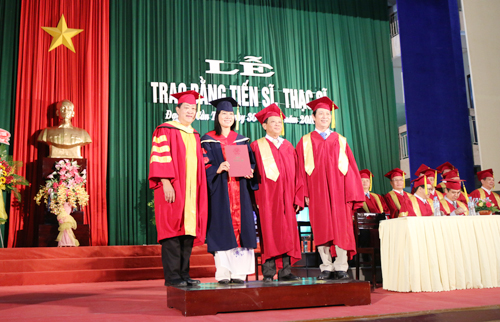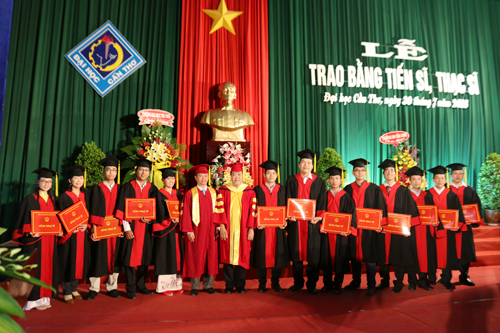
Tên đề tài: “Khả năng kháng oxy hóa và ức chế tyrosinase của cây dứa (Ananas comosus)”.
Tác giả: Nguyễn Thị Thu Hậu, Khóa: 2017
Chuyên ngành: Công nghệ sinh học; Mã số: 62420201. Nhóm ngành: Khoa học sự sống
Người hướng dẫn chính: PGS.TS. Trần Nhân Dũng - Trường Đại học Cần Thơ
Người hướng dẫn phụ: PGS.TS. Huỳnh Văn Bá - Trường Đại học Y Dược Cần Thơ
- Tóm tắt nội dung luận án
Luận án : “Khả năng kháng oxy hóa và ức chế tyrosinase của cây dứa (Ananas comosus)” bao gồm 05 nội dung:
(1) Khảo sát sơ bộ chọn vùng nguyên liệu và dung môi chiết xuất cao và định danh loài dứa vùng Tắc Cậu;
(2) Khảo sát khả năng kháng oxy hóa (hoạt tính khử DPPH, hoạt tính khử ion Fe3+ thành ion Fe2+, hoạt tính khử ion Cu2+ thành ion Cu+) và khả năng ức chế tyrosinase của cao methanol dứa Tắc Cậu;
(3) Sắc ký tách phân đoạn cao chiết methanol vỏ dứa và khảo sát khả năng kháng oxy hóa và ức chế tyrosinase của cao phân đoạn có hoạt tính cao;
(4) Khảo sát khả năng ức chế sự sản sinh melanin của cao phân đoạn có hoạt tính cao từ cao chiết methanol F1 vỏ dứa trên dòng tế bào B16F10;
(5) Khảo sát các hợp chất trong cao phân đoạn F1 methanol vỏ dứa có khả năng kháng oxy hóa và ức chế tyrosinase thông qua phân tích phổ GC-MS.
Nội dung 1, qua khảo sát sơ bộ chọn vùng nguyên liệu là vùng sinh thái Tắc Cậu thuộc huyện Châu Thành, tỉnh Kiên Giang và dung môi chiết xuất cao là methanol để thu mẫu và chiết xuất cao dứa phục vụ cho các nghiên cứu tiếp theo. Kết hợp giữa trình tự gen ITS và đặc điểm hình thái được mô tả trong quyển “Cây cỏ Việt Nam” của tác giả Phạm Hoàng Hộ, 2003, có thể khẳng định mẫu dứa đang nghiên cứu là loài Ananas comosus (L.) Merr.
Nội dung 2, khảo sát khả năng kháng oxy hóa (hoạt tính khử DPPH, hoạt tính khử ion Fe3+ thành ion Fe2+, hoạt tính khử ion Cu2+ thành ion Cu+) và khả năng ức chế tyrosinase của cao methanol dứa Tắc Cậu. Các phương pháp thử hoạt tính kháng oxy hóa khác nhau thì cho kết quả kháng oxy hóa không giống nhau. Cao methanol_lá (L_MTC) có hoạt tính khử DPPH (IC50 = 31,27 ± 3,91 µg/mL) là mạnh nhất, cao methanol vỏ (V_MTC) có hoạt tính khử Fe3+ (IC50 = 97,72 ± 0,42 µg/mL), khử Cu2+ (IC50 = 220,95 ± 8,21 µg/mL) mạnh nhất. Đồng thời, cao methanol_vỏ dứa có hoạt tính ức chế hoạt động của enzyme tyrosinase là mạnh nhất với giá trị IC50 thấp nhất (IC50 = 94,12 ± 2,79 µg/mL).
Nội dung 3, sắc ký tách phân đoạn cao chiết methanol vỏ dứa và khảo sát khả năng kháng oxy hóa và ức chế tyrosinase của cao phân đoạn có hoạt tính cao. Các CPĐ đều có hoạt tính kháng oxy hóa qua hoạt tính khử DPPH và khử Cu2+. Trong đó, F1 có hoạt tính kháng oxy hóa cao nhất với IC50 khử DPPH là 14,52 ± 0,44 (µg/mL), IC50 khử Cu2+ là 18,78 ± 2,55 (µg/mL). Mặt khác, hoạt tính ức chế tyrosinase mạnh nhất là ở cao phân đoạn F1 với giá trị (IC50 = 84,98 ± 5,06 µg/mL).
Nội dung 4, khảo sát khả năng ức chế sự sản sinh melanin của cao phân đoạn có hoạt tính mạnh (cao chiết phân đoạn F1 vỏ dứa) trên dòng tế bào B16F10. Cao phân đoạn F1 vỏ Dứa có khả năng ức chế sự sản sinh melanin trên dòng tế bào B16F10 ở nồng độ 25 µg/mL đã cho thấy khả năng ức chế sinh melanin so với đối chứng âm với mức 50,79%.
Nội dung 5, cao phân đoạn F1 được phân tích GC-MS cho thấy, có sự hiện diện của các chất có cấu trúc tương đồng với các chất từ thư viện dữ liệu như p-Cumaric acid, Ferulic acid, Coumarin acid, succinic acid, 3-Methylcyclopentanone, Cyclohexylideneacetic acid, Benzoic acid, 2-ethylhexyl ester, 2-Methyl-4,5-bis (hydroxymethyl) pyridine. Các chất này là những hợp chất đã được chứng minh là có hoạt tính kháng oxy hóa và hoạt tính ức chế tyrosinase mạnh.
- Những kết quả mới của luận án
Luận án đã xác định lá, thân, thịt quả và vỏ dứa đều có khả năng kháng oxy hóa và ức chế hoạt động của tyrosinase. Cao chiết methanol vỏ dứa có khả năng kháng oxy hóa (khử ion Cu2+) và ức chế hoạt động tyrosinase cao hơn cao chiết methanol từ lá, thân, thịt quả dứa.
Hàm lượng polyphenol tổng và flavonoid tổng số có mối liên hệ đến khả năng kháng oxy hóa của cao chiết dứa và có mối liên hệ với khả năng ức chế hoạt động tyrosinase của cao chiết dứa.
Kết quả ức chế sự sản sinh melanin trên dòng tế bào hắc tố B16F10 của cao phân đoạn F1 tách từ cao methanol vỏ dứa mở ra hướng ứng dụng mới của phụ phế phẩm quả dứa trong y dược học (phòng và trị các bệnh có liên quan đến việc hình thành hắc tố melanin như Alzheimer, Parkinson, tàn nhang, nám da và những bệnh liên quan đến dòng tế bào u hắc tố).
- Các ứng dụng/khả năng ứng dụng trong thực tiễn, các vấn đề cần tiếp tục nghiên cứu
- Khả năng ứng dụng trong thực tiễn:
Kết quả nghiên cứu cho thấy tiềm năng sử dụng phụ phế phẩm trong công nghiệp chế biến dứa, điều chế cao chiết từ vỏ dứa sử dụng sử dụng nguồn nguyên liệu trong y dược học giúp giảm thiểu ô nhiễm môi trường đồng thời sẽ làm tăng giá trị sản phẩm của dứa trong ngành nông nghiệp canh tác dứa.
- Các vấn đề cần tiếp tục nghiên cứu:
Tiếp tục nghiên cứu hoạt tính gây độc tế bào của cao chiết methanol vỏ và cao phân đoạn F1 vỏ dứa để có thể ứng dụng trong y, dược học và mỹ phẩm. Hoàn thiện quy trình sản xuất cao chiết vỏ quả dứa.
Dissertation entitled : "Antioxidative and tyrosinase inhibitory capacity of pineapple plant (Ananas comosus)".
Specialization: Biotechnology Code: 7420201
PhD student: Nguyen Thi Thu Hậu
Scientific supervisor: Assoc. Prof. Dr. Trần Nhân Dũng and Assoc. Prof. Dr. Huỳnh Văn Bá.
Academic institute: Biotechnology Research and Development Institute, CanTho University
- Thesis summary
Thesis "Antioxidative and tyrosinase inhibitory capacity of pineapple plant (Ananas comosus)" includes 05 contents:
(1) Preliminary survey to select material areas and extraction solvents and identify pineapple species in Tac Cau area;
(2) Investigation of antioxidant capacity (DPPH reduction activity, Fe3+ ion reduction activity to Fe2+ ions, Cu2+ ion reduction activity to Cu+ ions) and tyrosinase inhibition of Tac Cau pineapple methanol extract;
(3) Fractional separation chromatography of the methanolic extract of pineapple peel and investigation of the antioxidant and tyrosinase inhibitory capacity of the extract with strong activity;
(4) Investigation of the inhibition of melanin production by the highly active fractional extract from the pineapple peel F1 methanol extract on the B16F10 cell;
(5) Investigation of compounds in pineapple peel F1 methanol extract that have antioxidant and tyrosinase inhibitory properties through GC-MS spectroscopy.
Content 1, through preliminary survey, the raw material area was selected as Tac Cau ecological area in Chau Thanh district, Kien Giang province and the high extraction solvent was methanol to collect samples and extract pineapple extracts for further studies. The combination of ITS gene sequence and morphological characteristics described in the book "Trees of Vietnam" by Pham Hoang Ho, 2003, can confirm that the pineapple sample under study is Ananas comosus (L.) Merr.
Content 2: investigated the antioxidant capacity (DPPH reduction activity, Fe3+ ion reduction activity to Fe2+ ion, Cu2+ ion reduction activity to Cu+ ion) and tyrosinase inhibitory ability of Tac Cau pineapple high methanol. The different antioxidant activity test methods give different antioxidant results. Leaf methanol extract (L_MTC) has the strongest DPPH reduction activity (IC50 = 31,27 ± 3,91 µg/mL), peel methanol extract (V_MTC) has the strongest Fe3+ and Cu2+ reducing activity (IC50 = 97,72 ± 0,42 µg/mL, IC50 = 220,95 ± 8,21 µg/mL). At the same time, methanol extract_pineapple peel had the strongest inhibitory activity on tyrosinase enzyme activity with the lowest IC50 value (IC50 = 94.12 ± 2.79 µg/mL).
Content 3: fractional separation chromatography of pineapple peel methanol extract and investigation of antioxidant and tyrosinase inhibition of highly active fractions. The fractional extracts have both DPPH and Cu2+ reduction activities. In which, F1 had the highest antioxidant activity with IC50 reducing DPPH of 14.52 ± 0.44 (µg/mL), IC50 reducing Cu2+ was 18.78 ± 2.55 (µg/mL). On the other hand, the strongest tyrosinase inhibitory activity was found in the F1 fractional extract (IC50 = 84.98 ± 5.06 µg/mL).
Content 4: investigate the ability of inhibiting melanin production of highly active fractions (F1 fractionated extract of pineapple peel) on B16F10 cell line. Pineapple peel F1 extract has the ability to inhibit melanin production on B16F10 cell line at a concentration of 25 µg/mL, showing that it has the ability to inhibit melanin production compared to negative control at 50.79%.
Content 5: F1 fractions extract analyzed by GC-MS showed the presence of substances with structures similar to those of p-Cumaric acid, Ferulic acid, Coumarin acid, succinic acid, 3-Methylcyclopentanone, Cyclohexylideneacetic acid, Benzoic acid, 2-ethylhexyl ester, 2-Methyl-4,5-bis (hydroxymethyl) pyridine. These substances are compounds that have been shown to have potent antioxidant and tyrosinase inhibitory activities.
- Novel Achievement
The thesis shows that the leaves, stems, pineapple flesh and pineapple peel have antioxidant capacity and inhibit tyrosinase activity. The pineapple peel methanol extract has higher antioxidant capacity (Cu2+ deionization) and inhibits tyrosinase activity than the methanol extract from pineapple leaves, stems, and flesh.
The content of total polyphenols and total flavonoids was related to the antioxidant capacity of pineapple extract and to the ability to inhibit tyrosinase activity of pineapple extract.
The results of inhibiting melanin production on the B16F10 cell line of the F1 fractional extract extracted from pineapple peel methanol extract open a new direction of application of pineapple by-products in medicine and pharmacy (prevention and treatment of related diseases to the formation of melanin such as Alzheimer's, Parkinson's, freckles, melasma and diseases related to melanoma cell lines).
- Practical applications and further research
- Practical applications: research results show the potential of using by-products in the pineapple processing industry, preparing extracts from pineapple peels using raw materials in medicine and pharmacy to help reduce environmental pollution and increase prices value of pineapple products in the pineapple farming industry.
- Further research: Continue to study the cytotoxic activity of pineapple peel methanol extract and F1 fractional extract of pineapple peel for possible application in medicine, pharmacology, and cosmetics. Completing the production process of pineapple peel extract.
- Xem chi tiết nội dung luận án
- Xem thông tin đăng tải tại Website Bộ giáo dục và Đào tạo. (Nhập tên NCS vào ô tìm kiếm)





